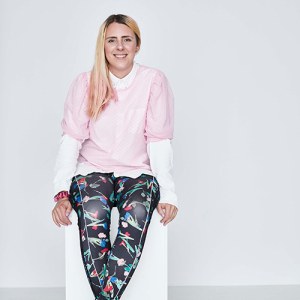-
Home
-
About Scanautomatic
-
Activities
-
Plan your visit
-
For Exhibitors
-
Technology for locally produced clothing and sustainable fashion
 The Microfactories project is shaking up the Swedish textile industry through increased automation and digitalisation. It’s about making the value chain more sustainable and circular with the help of robots and blockchain technology, but also getting us, as customers, to start investing in clothes instead of just consuming them.
The Microfactories project is shaking up the Swedish textile industry through increased automation and digitalisation. It’s about making the value chain more sustainable and circular with the help of robots and blockchain technology, but also getting us, as customers, to start investing in clothes instead of just consuming them.
Every year, Swedes throw away an average of six kilos of clothes and other textiles per person. And globally, 100 million garments are produced each year, a third of which are never sold because of poor fit, overproduction or delays in transport and the wrong season.
– It’s a huge waste of resources, while the fashion industry is one of the world’s most polluting industries because of all the chemicals used, says Ellen Flybäck, project manager for Microfactories, a three-year project run by Smart Textiles at Science Park Borås in collaboration with Automation Region.
Cooperation between the textile industry and automation companies
The aim of the project is to develop technologies and manufacturing processes for circular and sustainable flows by bringing together micro-enterprises in textiles and fashion with leading automation companies.
– We will teach robots to sew, says Ellen Flybäck. Sewing is a craft, but there are many parts of production that are monotonous and that a robot can do instead. Through automation, production can be made more efficient while at the same time boosting sustainability objectives, for example because garments are locally produced, which reduces the need for transport.
Flexibility and market-oriented production are key concepts. Typically, fashion companies have a lead time of two years from sketch to finished product in the shops.
– By creating more market-oriented and small-scale production, it is easier to adapt supply and volume to demand and thus reduce overproduction, says Ellen Flybäck. Overproduction is the single biggest environmental burden for the industry, as there is currently no large-scale recycling system in place.
New ways of repairing and reusing clothes are also an important piece of the puzzle, a task that is entirely possible to automate.
– For example, we have plans to construct a “remake-machine” to repair tears in garments with embroidery, make neat prints over stains and cut out samples from existing garments, says Ellen Flybäck.
Traceability is a prerequisite for remake
The project will also strengthen transparency and traceability throughout the value chain. This could be sensors in the manufacturing flow or blockchain technology that stores information in a garment – solutions that create new business opportunities linked to recycling and the secondary market.
– Companies involved in remaking need to know where garments come from in order to control, for example, chemical content and the lifetime of different fibres.
According to Ellen Flybäck, it is only a matter of time before the market becomes more regulated. For companies in the textile and fashion industry, it is therefore a good idea to be at the forefront and start the transition now.
– We only have one planet. Everyone needs to review their business models and adapt them to become more circular, Ellen Flybäck says. At the same time, consumers are making tougher demands and are also willing to pay for this kind of value.